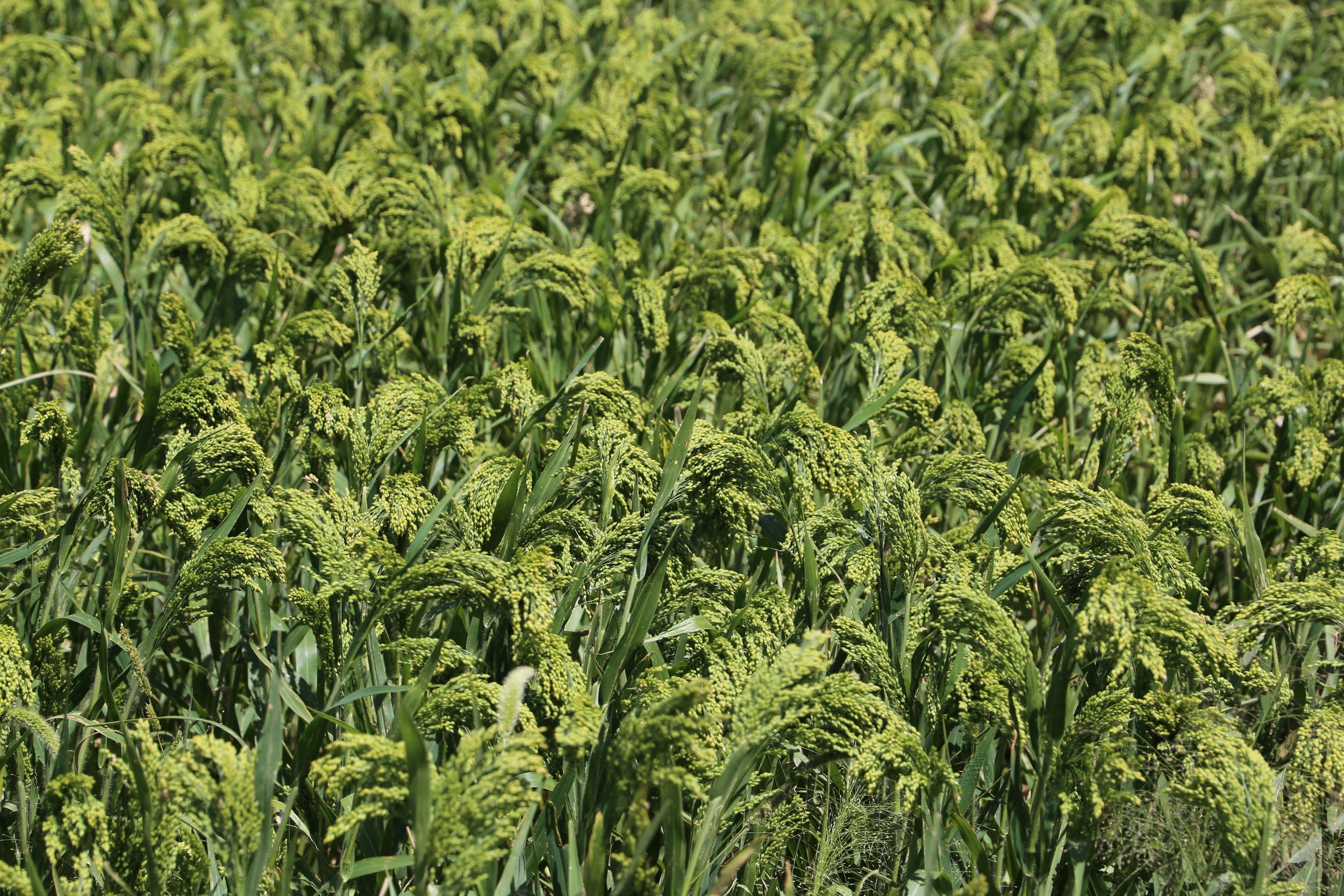Rotating Proso Millet with Winter Wheat
One Farmer’s Experience
What do peanut butter and jelly, bacon and eggs, and salt and pepper all have in common? They’re all the perfect pair!
Just like those perfect pairs, some farmers consider proso millet to be the perfect “pair” or addition to their winter wheat crop rotation. Many producers in the high plains have found this is the sweet spot for proso millet on their operation.
Meet Jack Maranville, a Colorado farmer who has a proso millet and wheat operation.
Farming the same ground his father started farming in 1946, Jack is honored to continue the family legacy by farming alongside his sons and their families. He is no “newcomer” to this millet movement as he has grown proso millet since 1978, and currently grows over 5,000 acres in his rotation.
“If you do it right from the beginning, it isn’t a hard crop to grow,” Jack shared.
What’s the key to a successful crop?
Jack says it comes down to weed management on each of your fields before you plant your proso. “Grasses are what will grow with, and ultimately hurt your proso. You need to take care of the grasses from the very beginning because once the millet starts to grow, you can’t spray anything to kill the unwanted grass,” he said. “You have to be diligent about cleaning your farms in the off-season, know your farms, know which ones are likely to be weedy, and plant those last.”
He has found for their farms on the high plains of Colorado, it works best to do a wheat, millet and fallow rotation. In the high plains because of soil type and limited rainfall, the ultimate goal is to harvest two crops in three years.
Jack and his family had tried various crops over the years, including corn and sunflowers. “With higher altitudes and cooler nights, plus the lack of rainfall, corn just doesn’t respond well in this area. We continually went back to wheat and proso millet,” Jack said.
What does a proso millet wheat rotation look like?
Year 1 (Wheat Crop): Jack plants winter wheat in September. Wheat is an eleven month crop which he harvests the following July. Jack then leaves the wheat stubble on the soil for cover during the winter. He does however still apply a herbicide, Roundup®, to kill any pre-emergent weeds that could become an issue when growing proso the next year.
Year 2 (Proso Crop): Come spring time, Jack sprays any emerging weeds with another herbicide application of Roundup®, to terminate weeds and reduce the impact they have on proso millet come planting time. June 1st through the 15th is the prime planting timeline for proso millet in Colorado. Jack shared if you are at a lower elevation, you probably have until June 20th to complete your planting.
**Bonus: Did you know you are able to use the same equipment to plant/harvest proso millet as winter wheat and other crops?! Learn more about it in this article.
Year 3 (Fallow): This is a fallow year. Because of being in dry(er)land, the ground needs the year to rest and not put all of its water and nutrients towards growing a crop. Before planting wheat, they go back in and till the ground due to the presence of “go back grass”. “We call it the ‘go back grass’ because it is what mother nature reverts to when you don’t work the land or plant a crop in the soil. These were once grasslands, so when it sits for a year it starts to go back to what it originally was. We do need to till the ground and spray twice to kill all the weeds again. Keeping a clean field is key to a successful proso millet crop.”
Looking Forward
As Jack looks back at his many years of growing proso millet, he shared how well Dryland Genetics has performed on his farm.
“I am growing proso at the highest altitude in the country and have been happy with what Dryland Genetics is doing in their breeding to help proso have a greater yield. We have seen it in our crops, even in the dry years, so I am really excited to see what these genetics have to offer even if we get adequate rainfall.”
Proso millet has a very similar fertilizer program as wheat which makes for easier management. Jack also shared that a big bonus of growing proso is there are no plant diseases or insects to battle.
Jack is excited about the huge advantage Dryland Genetics has to offer. “We need producers to get past holding onto their own seed from the previous year that could have genetics from 30+ years ago. To produce a better crop, we need to look at the newer genetics every year.”
Over the past 40 years, proso millet markets have gained momentum, and more places are accepting millet. “Dryland Genetics not only is working on breeding a superior millet plant, but is also working on additional markets.
It has been neat to be part of this from the beginning, see the research, and be able to watch the industry grow. I am looking forward to the ride that is to come in the future,” Jack stated.
If you are interested in learning more about how you can integrate proso millet into your operation, contact a local seed dealer.



